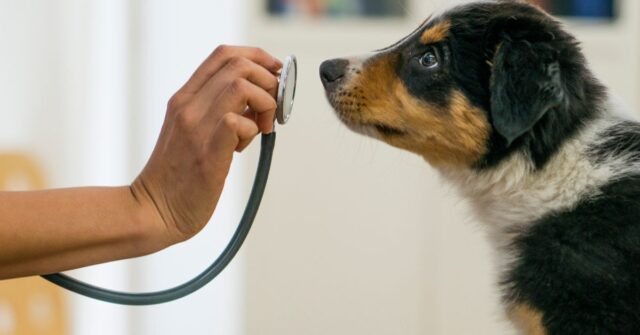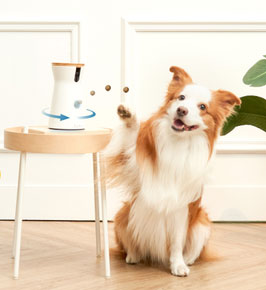Flying with dogs can be a challenging experience, but with proper preparation and understanding of airline policies, it can be a smooth and enjoyable journey for both you and your furry companion.
This guide covers everything you need to know to navigate airline policies when flying with your dog, ensuring a stress-free trip.
Introduction
As more people choose to travel with their pets, understanding the complexities of airline policies is crucial.
From required documentation to comfort tips, being well-prepared can make all the difference in your travel experience.

The Growing Trend of Pet Travel
Pet travel has become increasingly popular, with many airlines now offering services specifically designed for pets.
Whether it’s for a vacation or a move, more pet owners are opting to take their pets along on flights. This trend highlights the importance of being informed about the latest airline policies and procedures.
Why Understanding Airline Policies Is Crucial
Airline policies regarding pet travel can vary significantly. Knowing these policies ensures you can meet all requirements and avoid any last-minute surprises at the airport.
It also helps in making informed decisions about the best travel options for your dog.
Understanding Airline Policies
Different airlines have different rules and regulations for flying with pets. Understanding these policies is the first step in planning a successful trip with your dog.
General Airline Policies for Pet Travel
Most airlines allow pets to travel either in the cabin or as cargo, depending on their size and breed.
Cabin travel is generally reserved for smaller dogs that can fit comfortably in an airline-approved carrier under the seat in front of you.
Larger dogs typically travel as cargo in the aeroplane’s hold, which is pressurized and temperature-controlled.

Required Documentation for Flying with Dogs
When flying with your dog, you will need to provide specific documents.
These usually include a health certificate issued by a licensed veterinarian, proof of up-to-date vaccinations, and in some cases, a microchip identification.
It’s essential to check the specific requirements of your airline well in advance of your travel date.
Airline-Specific Forms and Regulations
In addition to general documentation, airlines often have their own forms that need to be filled out. These might include liability waivers and declarations of the dog’s health status.
Some airlines also require advance notice of your intent to travel with a pet, so make sure to notify them as early as possible.
Cost Considerations for Pet Travel
The cost of flying with a dog varies depending on the airline and the type of service chosen.
Cabin travel generally incurs a pet fee, while cargo travel might be priced based on the dog’s weight and the size of the carrier.
Additionally, you might need to pay for any necessary veterinary documentation or special travel crates.

Preparing for the Flight
Proper preparation is key to a smooth travel experience with your dog. From selecting the right airline to ensuring your dog is comfortable in their travel crate, these steps will help you get ready for your journey.
Selecting the Right Airline
Not all airlines are created equal when it comes to pet travel. Research and compare the pet travel policies of various airlines to find the one that best suits your needs.
Consider factors such as the cost, the airline’s reputation for handling pets, and the specific services they offer.
Booking Flights for Your Dog
Once you’ve selected an airline, it’s time to book your flight. When making your reservation, inform the airline that you will be travelling with a dog.
This is especially important if your dog will be traveling in the cabin, as there are often limits on the number of pets allowed per flight.
Choosing the Appropriate Travel Crate
Your dog’s travel crate is their safe space during the flight. Ensure that it is airline-approved and the right size for your dog to stand, turn around, and lie down comfortably.
Familiarize your dog with the crate well before the travel date to help them feel secure.
Health and Safety Considerations
Before travelling, take your dog to the vet for a health check.
Discuss any potential health risks associated with air travel, especially if your dog has a pre-existing condition or is a brachycephalic breed, which can have difficulty breathing.

Age Restrictions
Many airlines have age restrictions for pets. Puppies and kittens typically need to be at least 8 to 12 weeks old and fully weaned before they can travel.
Senior dogs might require special considerations, so consult with your vet.
Health Checks
Your dog should undergo a thorough health check before flying. This includes checking for any signs of illness, ensuring vaccinations are up to date, and obtaining a health certificate from your vet.
Vaccinations
Ensure your dog is vaccinated against common diseases such as rabies, distemper, and parvovirus.
Some airlines may require additional vaccinations depending on your destination, so check the specific requirements ahead of time.
During the Flight
Making your dog comfortable during the flight is essential. From familiarizing them with the travel crate to navigating airport procedures, these tips will help ensure a smooth journey.
Ensuring Your Dog’s Comfort
Your dog’s comfort is paramount during the flight. Familiarize them with the travel crate by letting them spend time in it at home.
Use a cozy blanket or a piece of clothing with your scent to make the crate more comforting.

Familiarizing Your Dog with the Travel Crate
Introduce your dog to the travel crate well before the trip. Allow them to explore and spend time in the crate while at home. This helps reduce anxiety and makes the crate feel like a safe space.
Comfort Items for the Flight
Include comfort items such as a favourite toy, a blanket, or an item of clothing with your scent in the crate. These familiar items can help reduce stress during the flight.
Feeding and Hydration Schedule
Adjust your dog’s feeding schedule before the flight to prevent discomfort. Avoid feeding them a large meal right before travelling, and provide water at regular intervals to keep them hydrated.

Navigating Airport Procedures
Airports can be overwhelming for dogs. Knowing what to expect can help you and your dog navigate these procedures with ease.
Security Checks
At security, you will need to remove your dog from their crate and carry them through the metal detector.
The crate will be scanned separately. Be prepared for this process and stay calm to help your dog feel secure.
Boarding Processes
When boarding the plane, follow the airline’s instructions for boarding with a pet.
Smaller dogs travelling in the cabin will stay in their crate under the seat, while larger dogs travelling as cargo will be loaded into the hold.
In-Flight Care
During the flight, keep an eye on your dog to ensure they are comfortable. For dogs in the cabin, check on them periodically. For dogs in cargo, trust that the airline staff is trained to monitor and care for pets.
Specific Guidelines for Assistance Dogs
Assistance dogs have specific guidelines for travel. Understanding these can help ensure a smooth experience for both you and your dog.

Legal Requirements for Assistance Dogs
Assistance dogs must be registered and certified. Ensure you have all necessary documentation, including certification of the dog’s training and a letter from a healthcare provider if required.
Certifications and Documentation Needed
Carry copies of your assistance dog’s certification, health records, and any required letters. Some airlines may also require advance notice that you will be traveling with an assistance dog.
Managing Assistance Dogs in Airports
Plan ahead for navigating the airport with your assistance dog. Familiarize yourself with the layout and identify pet relief areas. Allow extra time for security checks and boarding.
Ensuring Comfort and Safety During the Flight
Your assistance dog’s comfort and safety are crucial. Bring familiar items to help them feel secure, and be prepared to provide comfort during takeoff and landing, which can be stressful for dogs.
Post-Flight Considerations
After landing, there are several steps to ensure your dog’s well-being. From handling customs to retrieving your pet, these tips will help you navigate the post-flight process.
Handling Customs and Quarantine Procedures
Upon arrival, you may need to go through customs and quarantine procedures. Have all your documentation ready and be prepared for any inspections.
Some countries have strict biosecurity regulations, so ensure you comply with all requirements.
Retrieving Pets at the Destination
If your dog travelled as cargo, follow the airline’s instructions for retrieving them. Be patient, as this process can take some time. Check on your dog immediately to ensure they are safe and comfortable.
Ensuring Your Dog’s Well-Being Post-Travel
After the flight, give your dog time to adjust. Provide water and a small meal, and provide a familiar, quiet space for them to rest.
Monitor their health closely and consult a veterinarian if you notice any signs of stress or discomfort.

Conclusion
Travelling with your dog can be a rewarding experience when properly prepared.
By understanding airline policies and taking the necessary steps to ensure your dog’s comfort and safety, you can make your journey as smooth as possible.
Remember to plan ahead, gather all required documentation, and keep your dog’s needs in mind throughout the trip.
Recap of Essential Points
To recap, always check airline-specific policies, prepare all necessary documentation, choose the right travel crate, and make sure your dog is comfortable during the flight.
Additionally, be aware of post-flight procedures to ensure your dog’s well-being upon arrival.
Remember to Follow Airline-Specific Policies
Every airline has unique policies for pet travel, so it’s crucial to stay informed and follow these guidelines closely.
Doing so will help prevent any last-minute issues and ensure a pleasant journey for both you and your dog.










